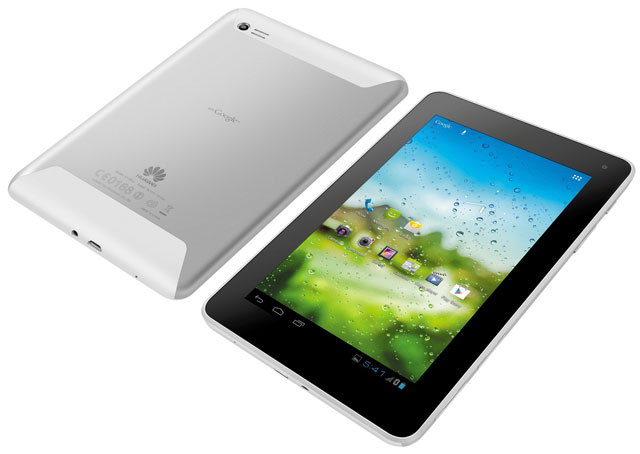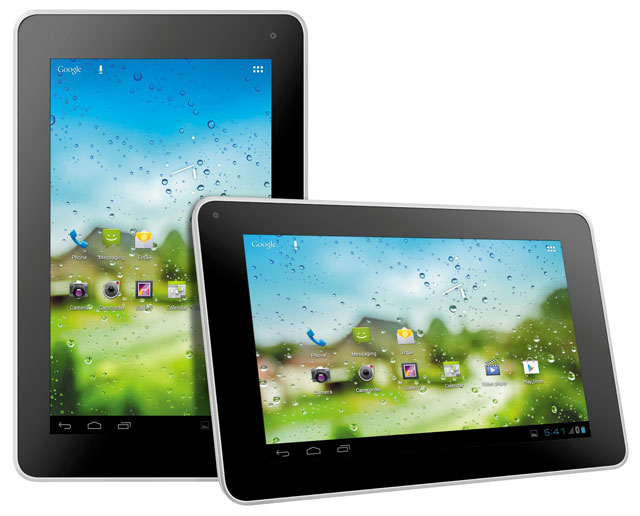
The problem with budget gadgets is that no matter how good their exteriors look, cutting corners on crucial components like processors results in a poor user experience. Huawei’s MediaPad 7 Lite is a prime example of this: it looks and feels like a premium device, but it behaves like a budget one.
Huawei makes the bulk of its revenue from network infrastructure rather than consumer products, but it keeps plugging away at refining its handsets and tablet computers while positioning them as low-cost alternatives to established brands.
On the handset front, the approach is working fairly well, with its high-end devices – the Ascend range — offering a reasonable balance between features and cost. In tablets, however, Huawei has a long way to go.
As the name suggests, the MediaPad 7 Lite is a 7-inch tablet running Android 4.0. It succeeds the MediaPad and Ideos 7 tablets and, although it suggests Huawei has taken some of the criticism about its earlier offerings — low-resolution screens, poor performance and terrible battery life — to heart, it hasn’t got the mix quite right yet.
For starters, the MediaPad 7 feels quite thick (11mm) and heavy (370g) for a 7-inch tablet. It’s noticeably bulkier than Samsung’s recent 7-inch offerings and thicker than all of the leading tablet computers in its form factor.
One of the unlikely upshots of the device’s heft is that it feels far more high end than its predecessors. The MediaPad 7 Lite is clad in a metal-looking, plastic unibody shell, with white panels at the top and bottom of the device’s rear cover.
Even the volume rocker and power/lock button feel surprisingly sturdy and resilient, as do the built-in covers for the Sim and microSD card slots. It’s these little touches, along with the 1 024×600-pixel display (which is far better than the 800×480-pixel displays often found on budget 7-inchers), that make the MediaPad 7 appear to be a higher-end device than it is. Turn the tablet on, and the illusion quickly dissipates.
The MediaPad 7 is slow — painfully so. Sometimes something as simple as changing the display orientation can induce shudders and flickers on the display as the 1,2GHz processor struggles to keep up. Data-intensive websites generate similar problems, and running multiple applications simultaneously only compounds the problem.
Of course, one has to make concessions for budget devices, which is why it seems unreasonable to complain about the poor quality of images from the 3,2-megapixel rear camera or the 0,3-megapixel front-facing one, or to be too scathing about the 8GB of internal storage (expandable to 32GB via microSD card).
However, given how integral processor speed is to user experience, it seems like a corner not worth cutting. Similarly, poor battery life is sure to leave users frustrated.
Left fully charged and inactive for a day, the MediaPad 7’s 4 100mAh battery lost almost 60% of its charge. In use, half an hour of browsing using Wi-Fi wiped out 10%. In heavy use, the MediaPad won’t even make it through four hours. Slow performance may be tolerable; a rubbish battery isn’t.
Thankfully, Huawei has opted for a bare-bones implementation of Android when it comes to the lock screen, home screens, and menus. Bizarrely, however, the company has gone with its own on-screen keyboard, which is so poorly designed that moving from letter to number keyboards requires touching a button on the right and returning to the letters layout requires pressing one on the left. Fortunately, Google’s Play store offers plenty of keyboard alternatives.

The MediaPad 7 is riddled with similarly strange design decisions: the volume rocker, for example, which is situated at the top when held in landscape view, works in the opposite way one expects it to. In other words, one presses the down button to turn the sound up. And, although there’s a slot for a Sim card and there’s a dialer app baked into the software, there’s no earpiece, meaning calls can only be made using the shoddy built-in speaker or a headset.
The MediaPad 7 feels like an outdated copycat offering. Worse, it feels like a device that’s mimicked entry-level offerings and done a poor job of it. It looks smart, but it acts terribly dumb.
Despite its failings, the MediaPad 7 does show just how far companies like Huawei have come since they first entered the consumer electronics fray. The company’s devices get better with every generation and it deserves to be commended for avoiding bloatware and ugly interface overlays.
Cheap devices have their place. They make their way into the hands of those who can’t afford the latest and greatest gadgets and otherwise wouldn’t get to experience them at all.
However, given that the Huawei MediaPad is priced at R3 000, it’s impossible to recommend it when devices with similar specifications can be had from more established manufacturers for the same money or less.
If Huawei wants to compete meaningfully in the tablet market, it’s going to have to be more selective about which corners it cuts. — (c) 2013 NewsCentral Media

